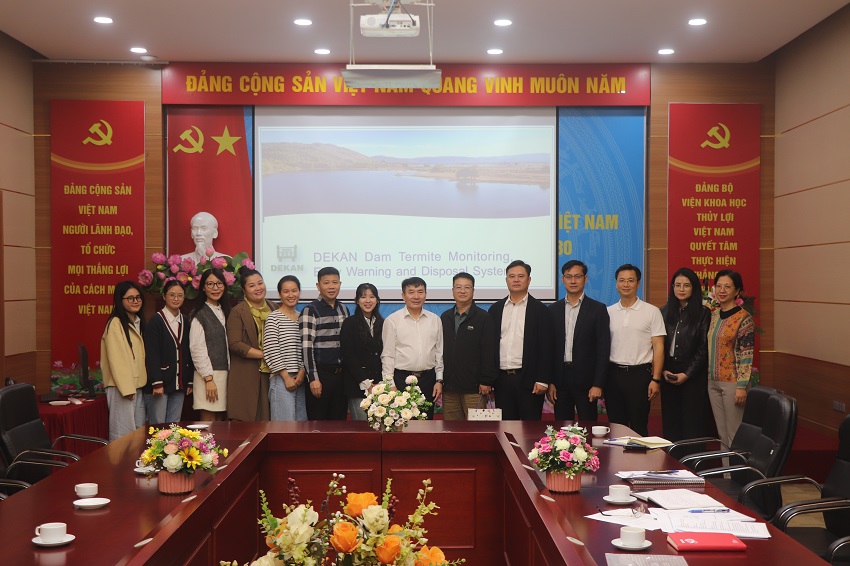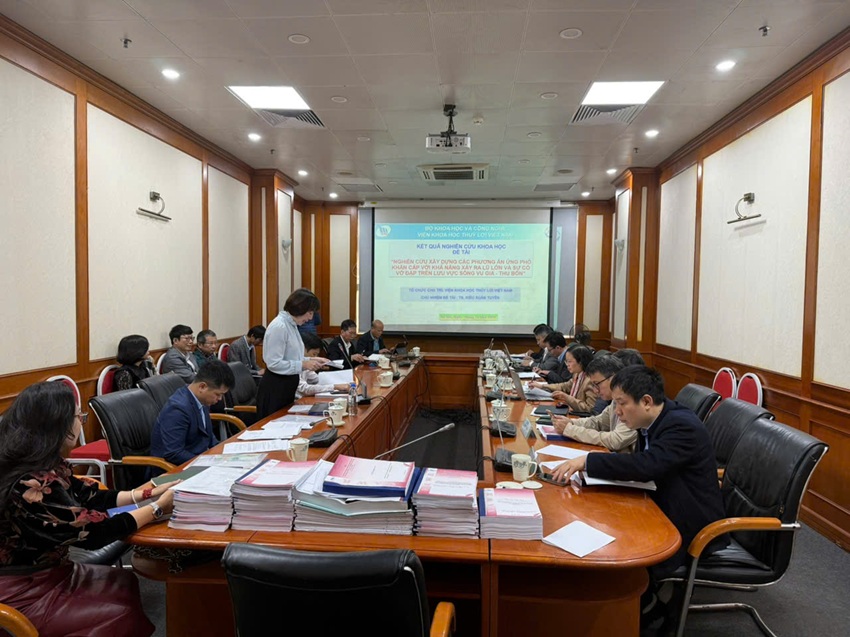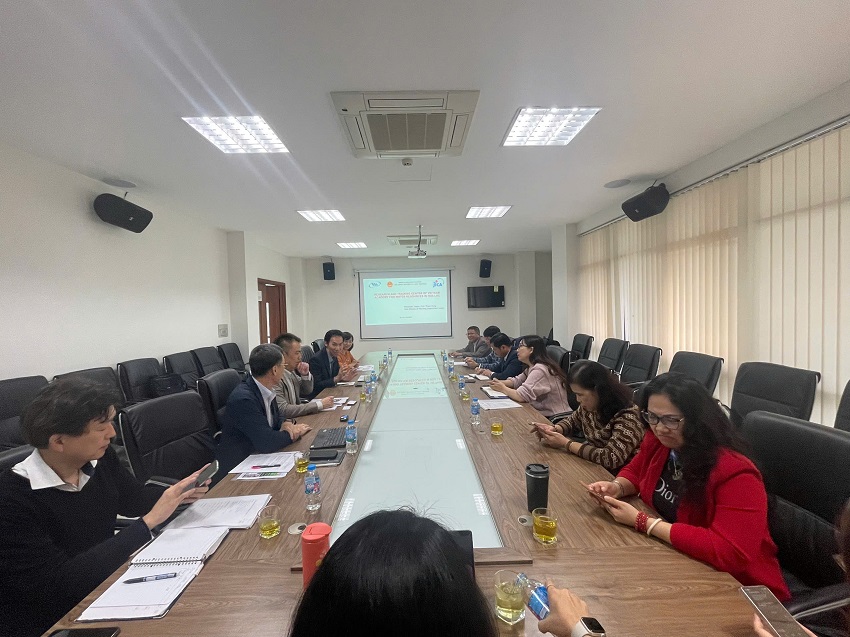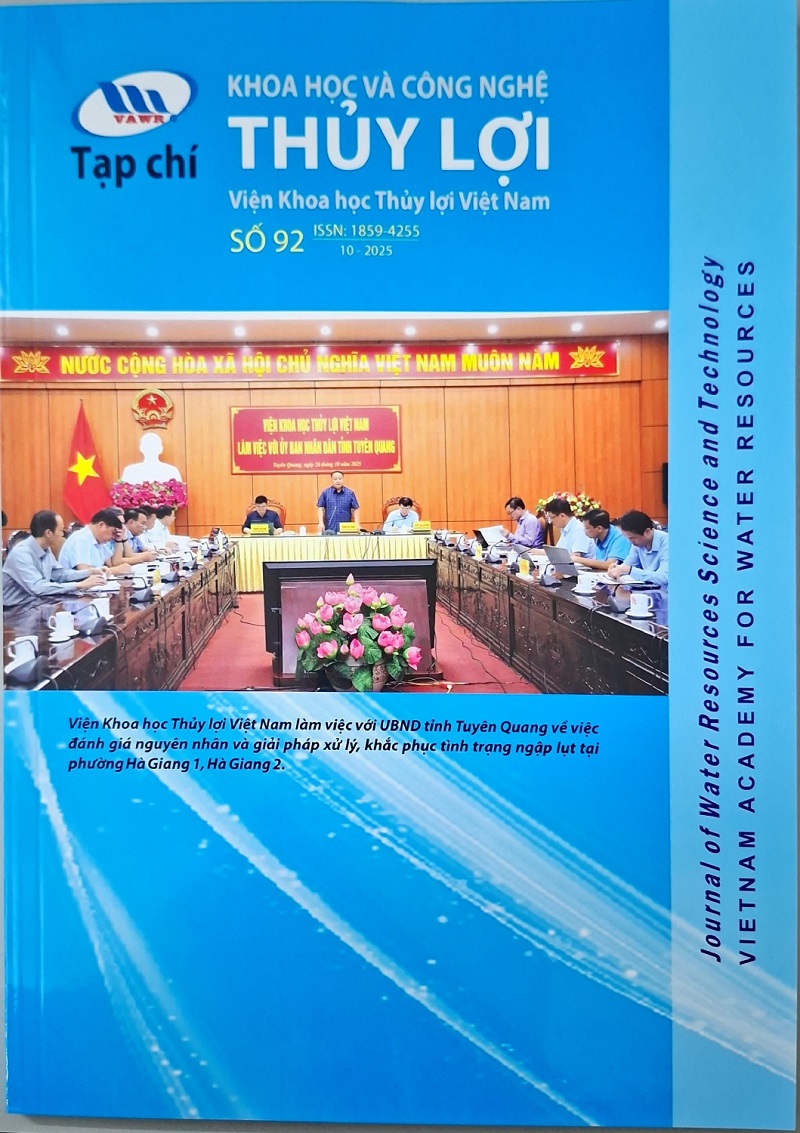Quantifying the Impacts of the 2020 Flood on Crop Production and Food Security in the Middle Reaches of the Yangtze River, China
02/08/2022This study uses satellite imagery and geospatial data to examine the impact of floods over the main planting areas for double-cropping rice and grain crops in the middle reaches of the Yangtze River. During summer 2020, a long-lasting 62-day heavy rainfall caused record-breaking floods over large areas of China, especially the Yangtze basin. Through close examination of Sentinel-1/2 satellite imagery and Copernicus Global Land Cover, between July and August 2020, the inundation area reached 21,941 and 23,063 km2, and the crop-affected area reached 11,649 and 11,346 km2, respectively.
We estimated that approximately 4.66 million metric tons of grain crops were seriously affected in these two months. While the PRC government denied that food security existed, the number of Grains and Feeds imported from the U.S. between January to July 2021 increased by 316%. This study shows that with modern remote sensing techniques, stakeholders can obtain critical estimates of large-scale disaster events much earlier than other indicators, such as disaster field surveys or crop price statistics. Potential use could include but is not limited to monitoring floods and land use coverage changes.
1. Introduction
2. Materials and Methods
2.1. Study Area
2.2. Data Sets
2.2.1. Sentinel-1A/B Data
2.2.2. Sentinel-2 Data
2.2.3. Copernicus Global Land Cover
2.3. Methodology
2.3.1. LULC Map Extracted from Multi-Source Data
2.3.2. Monthly Composite Flooding Map
3. Results
3.1. Spatial and Temporal Variability of Flood Impact Area
3.2. Food Security
4. Discussion
4.1. Rapid Damage Assessment
4.2. Remedial Actions after the Flood
4.3. Apply the Research Results for Other Cases
5. Conclusions
References
1. Liu, Y.; Zhou, Q.; Yu, Q.;Wu,W. Analysis of spatial pattern and ecological service value changes of large-scale regional paddy fields based on remote sensing data. Smart Agric. 2020, 2, 43–57.
2. Lü, X.; Zhou, G. A review on main meteorological disaster of double-cropping rice in China. J. Appl. Meteor. Sci. 2018, 29, 385–395. [CrossRef]
3. The state council information office. P.R.C. The State Council Information Office Held a Press Conference on Flood Prevention and Disaster ReliefWork. 13 August 2020. Available online: http://www.gov.cn./xinwen/2020-08/13/content_5534534.htm (accessed on 5 May 2022).
4. The Foreign Agricultural Service (FAS). China: Grain and Feed Update. 2021. Available online: https://apps.fas.usda.gov/
newgainapi/api/Report/DownloadReportByFileName?fileName=Grain%20and%20Feed%20Update_Beijing_China%20-%20People%27s%20Republic%20of_06-28-2021.pdf (accessed on 4 May 2022).
5. Huo, Z.; Fan, Y.; Yang, J.; Shang, Y. Review on Agricultural Flood Disaster in China. J. Appl. Meteorol. Sci. 2017, 28, 641–653.
6. Yin, H.; Li, C. Human impact on floods and flood disasters on the Yangtze River. Geomorphology 2001, 41, 105–109. [CrossRef]
7. Liu, J.;Wang, S.; Li, D. The Analysis of the Impact of Land-Use Changes on Flood Exposure ofWuhan in Yangtze River Basin, China. Water Resour. Manag. 2014, 28, 2507–2522. [CrossRef]
8. Mou, X.L.; Li, H.; Huang, C.; Liu, Q.; Liu, G. Application progress of Google Earth Engine in land use and land cover remote sensing information extraction. Remote Sens. Land Resour. 2021, 33, 1–10. Available online: https://www.cgsjournals.com/zgdzdcqkw-data/gtzyyg/2021/2/PDF/gtzyyg202102001.pdf (accessed on 18 June 2022).
9. Pandey, A.C.; Kaushik, K.; Parida, B.R. Google Earth Engine for Large-Scale Flood Mapping Using SAR Data and Impact Assessment on Agriculture and Population of Ganga-Brahmaputra Basin. Sustainability 2022, 14, 4210. [CrossRef]
10. Fatchurrachman; Rudiyanto; Soh, N.C.; Shah, R.M.; Giap, S.G.E.; Setiawan, B.I.; Minasny, B. High-Resolution Mapping of Paddy Rice Extent and Growth Stages across Peninsular Malaysia Using a Fusion of Sentinel-1 and 2 Time Series Data in Google Earth Engine. Remote Sens. 2022, 14, 1875. [CrossRef]
11. Attia, W.; Ragab, D.; Abdel-Hamid, A.M.; Marghani, A.M.; Elfadaly, A.; Lasaponara, R. On the Use of Radar and Optical Satellite Imagery for the Monitoring of Flood Hazards on Heritage Sites in Southern Sinai, Egypt. Sustainability 2022, 14, 5500. [CrossRef]
12. Huang, Z.;Wu,W.; Liu, H.; Zhang,W.; Hu, J. Identifying Dynamic Changes inWater Surface Using Sentinel-1 Data Based on Genetic Algorithm and Machine Learning Techniques. Remote Sens. 2021, 13, 3745. [CrossRef]
13. Zhang, D.; Shi, X.; Xu, H.; Jing, Q.; Pan, X.; Liu, T.; Wang, H.; Hou, H. A GIS-Based Spatial Multi-Index Model for Flood Risk Assessment in the Yangtze River Basin, China. Environ. Impact Assess. Rev. 2020, 83, 106397. [CrossRef]
14. Liu, S.; Zheng, Y.; Feng, L.; Chen, J.; Lakshmi, V.; Shi, H. Are Only Floods with Large Discharges Threatening? Flood Characteristics Evolution in the Yangtze River Basin. Geosci. Lett. 2021, 8, 32. [CrossRef]
15. Yanan, Y.; Yang, K.; Xiao, F.; Yadong, C.; Hanwen, Z.; Hongming, Z. Edge extraction method of remote sensing UAV terrace image based on topographic feature. Smart Agric. 2019, 1, 50.
16. Nguyen, A.K.; Liou, Y.A.; Li, M.H.; Tran, T.A. Zoning eco-environmental vulnerability for environmental management and protection. Ecol. Indic. 2016, 69, 100–117. [CrossRef]
17. Liou, Y.A.; Nguyen, A.K.; Li, M.H. Assessing spatiotemporal eco-environmental vulnerability by Landsat data. Ecol. Indic. 2017, 80, 52–65. [CrossRef]
18. Nguyen, K.A.; Liou, Y.A. Global mapping of eco-environmental vulnerability from human and nature disturbances. Sci. Total Environ. 2019, 664, 995–1004. [CrossRef]
19. Liu, Y.; Zhou, Y. Spatiotemporal dynamics and gray forecast of ecosystem services value in the Yangtze River Economic Belt. Ecol. Econ. 2019, 35, 196–201.
20. Dao, P.D.; Liou, Y.A. Object-based flood mapping and affected rice field estimation with Landsat 8 OLI and MODIS data. Remote Sens. 2015, 7, 5077–5097. [CrossRef]
21. Li, G.F.; Xiang, X.Y.; Tong, Y.Y.;Wang, H.M. Impact assessment of urbanization on flood risk in the Yangtze River Delta. Stoch. Environ. Res. Risk Assess. 2013, 27, 1683–1693. [CrossRef]
22. Report on ImportantWater and Rain Conditions in the Yangtze River Basin in 2020. Available online: http://www.cjh.com.cn/article_2313_237960.html (accessed on 4 May 2022).
23. Zhao, R.; Li, Y.; Ma, M. Mapping Paddy Rice with Satellite Remote Sensing: A Review. Sustainability 2021, 13, 503. [CrossRef]
24. Felegari, S.; Sharifi, A.; Moravej, K.; Amin, M.; Golchin, A.; Muzirafuti, A.; Tariq, A.; Zhao, N. Integration of Sentinel 1 and Sentinel 2 Satellite Images for Crop Mapping. Appl. Sci. 2021, 11, 10104. [CrossRef]
25. Valero, S.; Arnaud, L.; Planells, M.; Ceschia, E. Synergy of Sentinel-1 and Sentinel-2 Imagery for Early Seasonal Agricultural Crop Mapping. Remote Sens. 2021, 13, 4891. [CrossRef]
26. Sentinel-1, ESA. Available online: https://sentinel.esa.int/web/sentinel/missions/sentinel-1 (accessed on 5 May 2022).
27. Sentinel-1 SAR GRD. Available online: https://developers.google.com/earth-engine/datasets/catalog/COPERNICUS_S1_GRD (accessed on 5 May 2022).
28. Sentinel-2, ESA. Available online: https://sentinel.esa.int/web/sentinel/missions/sentinel-2 (accessed on 5 May 2022).
29. Liu, Y.; Li, Y.; Wu, J. Study on extraction of paddy fields based on LSWI and time series NDV. Geogr. Geo-Inf. Sci. 2015, 31, 32–37.
30. Xiao, X.; Boles, S.; Frolking, S.; Li, C.; Babu, J.Y.; Salas,W.; Moore, B. Mapping Paddy Rice Agriculture in South and Southeast Asia Using Multi-Temporal MODIS Images. Remote Sens. Environ. 2006, 100, 95–113. [CrossRef]
31. Jamali, A. Evaluation and comparison of eight machine learning models in land use/land cover mapping using Landsat 8 OLI: A case study of the northern region of Iran. SN Appl. Sci. 2019, 1, 1448. [CrossRef]
32. Carranza-García, M.; García-Gutiérrez, J.; Riquelme, J.C. A framework for evaluating land use and land cover classification using convolutional neural networks. Remote Sens. 2019, 11, 274. [CrossRef]
33. Ma, L.; Li, M.; Ma, X.; Cheng, L.; Du, P.; Liu, Y. A review of supervised object-based land-cover image classification. ISPRS J. Photogramm. Remote Sens. 2017, 130, 277–293. [CrossRef]
34. Talukdar, S.; Singha, P.; Mahato, S.; Shahfahad; Pal, S.; Liou, Y.-A.; Rahman, A. Land-Use Land-Cover Classification by Machine Learning Classifiers for Satellite Observations—A Review. Remote Sens. 2020, 12, 1135. [CrossRef]
35. Copernicus Global Land Operations “Vegetation and Energy”. Available online: https://land.copernicus.eu/global/sites/cgls.vito.be/files/products/CGLOPS1_PUM_LC100m-V3_I3.4.pdf (accessed on 5 May 2022).
36. Buchhorn, M.; Smets, B.; Bertels, L.; De Roo, B.; Lesiv, M.; Tsendbazar, N.-E.; Herold, M.; Fritz, S. Copernicus Global Land Service: Land Cover 100m: Collection 3: Epoch 2019: Globe 2020. Available online: https://zenodo.org/record/3939050#.YrVOxuxBxPY (accessed on 5 May 2022). [CrossRef]
37. Buchhorn, M.; Lesiv, M.; Tsendbazar, N.-E.; Herold, M.; Bertels, L.; Smets, B. Copernicus Global Land Cover Layers—Collection 2. Remote Sens. 2020, 12, 1044. [CrossRef]
38. Maxwell, A.E.;Warner, T.A.; Fang, F. Implementation of machine-learning classification in remote sensing: An applied review. Int. J. Remote Sens. 2018, 39, 2784–2817. [CrossRef]
39. Halder, A.; Ghosh, A.; Ghosh, S. Supervised and unsupervised landuse map generation from remotely sensed images using ant based systems. Appl. Soft Comput. 2011, 11, 5770–5781. [CrossRef]
40. Li, D.; Wu, B.; Chen, B.; Xue, Y.; Zhang, Y. Review of water body information extraction based on satellite remote sensing. J. Tsinghua Univ. Sci. Technol. 2020, 60, 147–161.
41. Kang, J.; Yang, X.; Wang, Z.; Huang, C.; Wang, J. Collaborative Extraction of Paddy Planting Areas with Multi-Source Information Based on Google Earth Engine: A Case Study of Cambodia. Remote Sens. 2022, 14, 1823. [CrossRef]
42. Htitiou, A.; Boudhar, A.; Chehbouni, A.; Benabdelouahab, T. National-Scale Cropland Mapping Based on Phenological Metrics, Environmental Covariates, and Machine Learning on Google Earth Engine. Remote Sens. 2021, 13, 4378. [CrossRef]
43. Liou, Y.-A.; Sha, H.-C.; Chen, T.-M.;Wang, T.-S.; Li, Y.-T.; Lai, Y.-C.; Chiang, M.-H. Assessment of disaster losses in rice paddy field and yield after Tsunami induced by the 2011 great east Japan earthquake. J. Mar. Sci. Technol. 2012, 20, 2.
44. Xing, L.; Niu, Z.; Jiao, C.; Zhang, J.; Han, S.; Cheng, G.; Wu, J. A Novel Workflow for Seasonal Wetland Identification Using Bi-Weekly Multiple Remote Sensing Data. Remote Sens. 2022, 14, 1037. [CrossRef]
45. National Bureau of Statistics of China. Available online: https://data.stats.gov.cn/english/index.htm (accessed on 5 May 2022).
46. Viana, C.M.; Girão, I.; Rocha, J. Long-Term Satellite Image Time-Series for Land Use/Land Cover Change Detection Using Refined Open Source Data in a Rural Region. Remote Sens. 2019, 11, 1104. [CrossRef]
47. Chen, Z.; Wang, J. Land use and land cover change detection using satellite remote sensing techniques in the mountainous Three Gorges Area, China. Int. J. Remote Sens. 2010, 31, 1519–1542. [CrossRef]
48. UPDATE 1-China Buys First Indian Rice in Decades amid Scarce Supply; Reuters: London, UK, 2020.
49. Li, X.; Yuan,W.; Dong,W. A Machine Learning Method for Predicting Vegetation Indices in China. Remote Sens. 2021, 13, 1147. [CrossRef]
50. Wang, Y.; Zhang, Z.; Zuo, L.; Wang, X.; Zhao, X.; Sun, F. Mapping Crop Distribution Patterns and Changes in China from 2000 to 2015 by Fusing Remote-Sensing, Statistics, and Knowledge-Based Crop Phenology. Remote Sens. 2022, 14, 1800. [CrossRef]
51. Yan, H.; Du,W.; Zhou, Y.; Luo, L.; Niu, Z. Satellite-Based Evidences to Improve Cropland Productivity on the High-Standard Farmland Project Regions in Henan Province, China. Remote Sens. 2022, 14, 1724. [CrossRef]
52. Zhao, R.; Li, Y.; Chen, J.; Ma, M.; Fan, L.; Lu, W. Mapping a Paddy Rice Area in a Cloudy and Rainy Region Using Spatiotemporal Data Fusion and a Phenology-Based Algorithm. Remote Sens. 2021, 13, 4400. [CrossRef]
53. Bian, C.; Shi, H.;Wu, S.; Zhang, K.;Wei, M.; Zhao, Y.; Sun, Y.; Zhuang, H.; Zhang, X.; Chen, S. Prediction of Field-Scale Wheat Yield Using Machine Learning Method and Multi-Spectral UAV Data. Remote Sens. 2022, 14, 1474. [CrossRef]
54. Roman, L. Ukraine Can Feed the World. UkraineAlert. Atlantic Council. 4 March 2021. Available online: https://www.atlanticcouncil.org/blogs/ukrainealert/ukraine-can-feed-the-world/ (accessed on 20 June 2022).
55. Jha, M.K.; Chowdary, V.M. Challenges of Using Remote Sensing and GIS in Developing Nations. Hydrogeol. J. 2006, 15, 197–200. [CrossRef]
56. Liu, L.-T.; Liu, X.-J.; Lun, F.; Wu, L.; Lu, C.-X.; Guo, J.-H.; Qu, T.-T.; Liu, G.; Shen, L.; Cheng, S.-K. Research on China’s food security under global climate change background. J. Nat. Resour. 2018, 33, 927–939.
57. Cheng, S.-K.; Li, Y.-Y.; Liu, X.-J.;Wang, L.-E.;Wu, L.; Lu, C.-X.; Xie, G.-D.; Liu, A.-M. Thoughts on food security in China in the new period. J. Nat. Resour. 2018, 33, 911–926.
——————————————————————————————————————
Liang-Chen Wang 1 , Duc Vinh Hoang 2,3 and Yuei-An Liou 2,*
1 Department of Space Science and Engineering, National Central University, 300 Jhongda Road,
Jhongli District, Taoyuan City 320317, Taiwan; 101683006@cc.ncu.edu.tw
2 Center for Space and Remote Sensing Research, National Central University, 300 Jhongda Road,
Jhongli District, Taoyuan City 320317, Taiwan; hoangducvinh@vawr.org.vn
3 The National Key Laboratory of River and Coastal Engineering, Vietnam Academy for Water Resources,
171 Tay Son Street, Dongda District, Hanoi 100000, Vietnam
* Correspondence: yueian@csrsr.ncu.edu.tw; Tel.: +886-3-422-7151 (ext. 57631)
Remote Sens. 2022, 14, 3140. https://doi.org/10.3390/rs14133140 https://www.mdpi.com/journal/remotesensing
Ý kiến góp ý:









